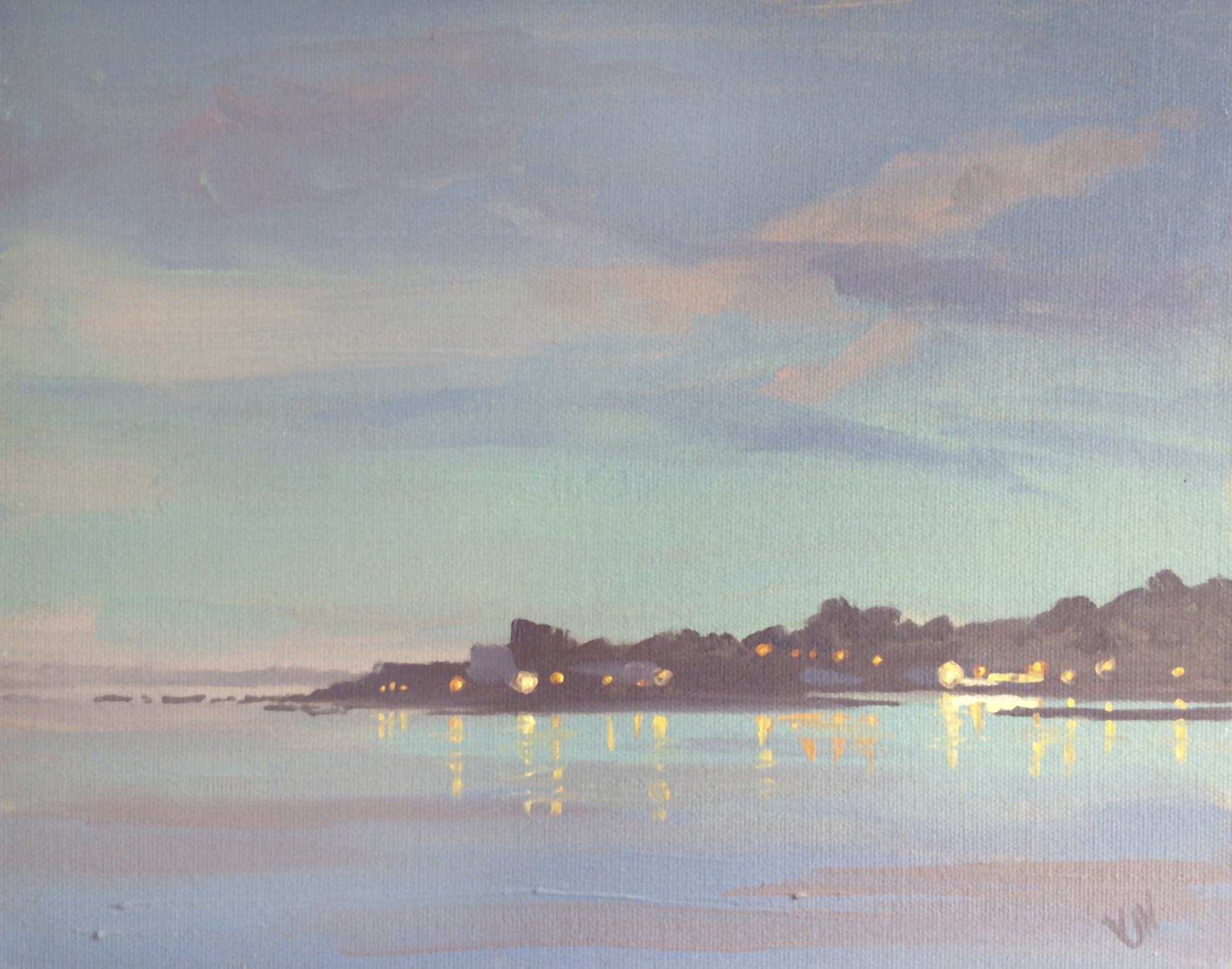Wexford Nocturne
At last, after 10 years of thinking about it, I finally painted my first 'nocturne'. My fascination with night-time paintings began with Whistler, the American artist who, in the 1870's, made the most beautiful paintings of the Thames at dusk. I saw pictures of them in a book when I was an art student and was amazed by the luminosity and depth of colour he achieved. In 2004 Tate Britain mounted an exhibition titled 'Turner, Whistler, Monet' for which Whistler's famous 'Nocturnes' were brought over from the USA. I lived in Northern Ireland at the time and I saved up my money to buy a return flight to London, just for the day, to see them. It was worth it, they are exquisite.
So, I resolved that one day, I would paint a nocturne of my own. Since then I have watched the sky after the sun has set; watched the colours shift from pinks to blues and then to that magical green-blue colour. It only lasts for a few seconds, and it is different every time, but somehow, there always seem to be a moment of magical light, just before darkness. I have mixed the colours in my head, which blue to start with? How to soften it without losing the depth of colour?
Finally, last week, in Ireland, a new friend suggested we could paint a nocturne from beside her campervan, parked above the shore, overlooking Wexford town. I arrived around 7pm on a very blustery evening, we made tea and began to set up our equipment in the lee of her van, wondering 'where to start with a painting to be made in the dark?' I decided to gamble, to guess some of the colours that might arise and mix them in advance. I knew that once the light from the sky faded to blue, I would be unable to see the colours on my palette so I mixed the orange colours of the street lights, the soft warm purple-pinks and the blue-greens I anticipated, concentrating more on the values than the exact hues, just trying to make sure that all of the colours where soft and not too vivid. Then I made sure I could remember where they were located on the palette so that I could find them once the light had faded!
Then we waited for the light to change... but the weather had other plans... a sudden, squally, torrential downpour - we threw our equipment under the camper and jumped inside for cover but it was too late, everything was soaked...undeterred, we mopped up the water and set up again as a kind neighbour brought us hot chocolate from her camping stove. Then, quickly, the clouds blew away and the light returned, it was perfect, a few little clouds to catch the last warm pinks and that magical, deep blue-green in the lower part of the sky. We began to paint, working fast, first on the sky and then on the land, using thin layers of paint, thinking of Whistler's lovely loose glazes. As the colour faded from the surroundings, the yellow lights on the shore became brighter and more clearly defined, I played with little blobs of yellow and orange - hoping I had correctly remembered their position on my palette since I couldn't see the colours any more. Eventually it was too dark to see anything at all. We packed up by torch light and I walked back to my BnB feeling exhausted but exhilarated. This is why I love Plein Air painting, each piece of work represents an adventure: a new friendship, a beautiful location, a battle with the weather, and a chance to express an idea I have nurtured for a long time.
The following morning I was delighted to see what I had painted, my first nocturne, 10 years in the making.
